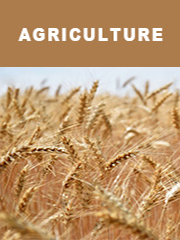TOP CATEGORY: Chemicals & Materials | Life Sciences | Banking & Finance | ICT Media

Download Report PDF Instantly
Report overview
The global Veterinary Diagnostic Reagents market was valued at USD 5.15 billion in 2023 and is projected to reach USD 7.24 billion by 2030, growing at a Compound Annual Growth Rate (CAGR) of 5.2% during the forecast period (2024-2030).
Veterinary diagnostic reagents are substances or agents used in veterinary medicine to detect, identify, or measure specific markers or pathogens in animals, aiding in the diagnosis of diseases or conditions. These reagents include antigens, antibodies, nucleic acids, and other molecular probes essential for various diagnostic tests, such as ELISA, PCR, and immunohistochemistry, facilitating accurate diagnosis and treatment of animal health issues.
Rising Pet Population: The increasing pet population, coupled with growing awareness about animal health and wellness, is driving the demand for veterinary diagnostic reagents. Pet owners and veterinary professionals are increasingly investing in diagnostic tests and procedures to ensure early detection and effective management of diseases in animals.
Prevalence of Infectious Diseases: The prevalence of infectious diseases among animals, including pets, livestock, and wildlife, is a major factor contributing to the demand for veterinary diagnostic reagents. These reagents play a crucial role in the diagnosis and surveillance of diseases such as parvovirus, rabies, brucellosis, and avian influenza.
Technological Advancements: Technological advancements in veterinary diagnostics, such as the development of rapid diagnostic tests, point-of-care devices, and molecular diagnostic techniques, are fueling market growth. These advancements enable faster, more accurate, and cost-effective diagnosis of various diseases in animals.
Government Initiatives for Animal Health: Government initiatives aimed at promoting animal health and welfare, such as vaccination programs, disease surveillance, and control measures, are driving the adoption of veterinary diagnostic reagents. Public-private partnerships and regulatory support also contribute to market growth.
Focus on Food Safety and Quality: In the livestock and poultry industries, there is a growing emphasis on food safety and quality assurance. Veterinary diagnostic reagents are used for disease monitoring and screening in food-producing animals to ensure the safety and integrity of animal-derived products for human consumption.
Increasing Demand for Companion Animal Diagnostics: The rising demand for companion animal diagnostics, driven by the growing pet ownership trend and increasing expenditure on pet healthcare, is a significant growth driver for the veterinary diagnostic reagents market. Companion animal diagnostics encompass a wide range of tests, including blood chemistry, hematology, immunology, and microbiology.
Market Competition and Innovation: The veterinary diagnostic reagents market is characterized by intense competition among key players. Companies are focusing on product innovation, strategic partnerships, and expansion of their product portfolios to gain a competitive edge and address the evolving needs of veterinary professionals and pet owners.
Global Market Dynamics: Market growth is observed globally, with regions such as North America, Europe, Asia-Pacific, and Latin America contributing to market expansion. Factors such as increasing disposable income, urbanization, and changing consumer preferences for pet ownership influence market dynamics across different regions.
Future Outlook: The outlook for the veterinary diagnostic reagents market remains positive, driven by ongoing technological advancements, increasing awareness about animal health, and the growing demand for quality veterinary care services. Continued investments in research and development are expected to further drive market growth and innovation in the coming years.
The global key manufacturers of Veterinary Diagnostic Reagents include IDEXX, LSI, BioNote, Thermo Fisher Scientific, Neogen, Svanova, Randox Laboratories, China Animal Husbandry Industry and Tianjin Ringpu Bio-technology, etc. in 2023, the global top five players have a share approximately % in terms of revenue.
This report aims to provide a comprehensive presentation of the global market for Veterinary Diagnostic Reagents, with both quantitative and qualitative analysis, to help readers develop business/growth strategies, assess the market competitive situation, analyze their position in the current marketplace, and make informed business decisions regarding Veterinary Diagnostic Reagents. This report contains market size and forecasts of Veterinary Diagnostic Reagents in global, including the following market information:
MARKET MONITOR GLOBAL, INC (MMG) has surveyed the Veterinary Diagnostic Reagents manufacturers, suppliers, distributors and industry experts on this industry, involving the sales, revenue, demand, price change, product type, recent development and plan, industry trends, drivers, challenges, obstacles, and potential risks.
Total Market by Segment:
Chapter 1: Introduces the definition of Veterinary Diagnostic Reagents, market overview.
Chapter 2: Global Veterinary Diagnostic Reagents market size in revenue and volume.
Chapter 3: Detailed analysis of Veterinary Diagnostic Reagents manufacturers competitive landscape, price, sales and revenue market share, latest development plan, merger, and acquisition information, etc.
Chapter 4: Provides the analysis of various market segments by type, covering the market size and development potential of each market segment, to help readers find the blue ocean market in different market segments.
Chapter 5: Provides the analysis of various market segments by application, covering the market size and development potential of each market segment, to help readers find the blue ocean market in different downstream markets.
Chapter 6: Sales of Veterinary Diagnostic Reagents in regional level and country level. It provides a quantitative analysis of the market size and development potential of each region and its main countries and introduces the market development, future development prospects, market space of each country in the world.
Chapter 7: Provides profiles of key players, introducing the basic situation of the main companies in the market in detail, including product sales, revenue, price, gross margin, product introduction, recent development, etc.
Chapter 8: Global Veterinary Diagnostic Reagents capacity by region & country.
Chapter 9: Introduces the market dynamics, latest developments of the market, the driving factors and restrictive factors of the market, the challenges and risks faced by manufacturers in the industry, and the analysis of relevant policies in the industry.
Chapter 10: Analysis of industrial chain, including the upstream and downstream of the industry.
Chapter 11: The main points and conclusions of the report.